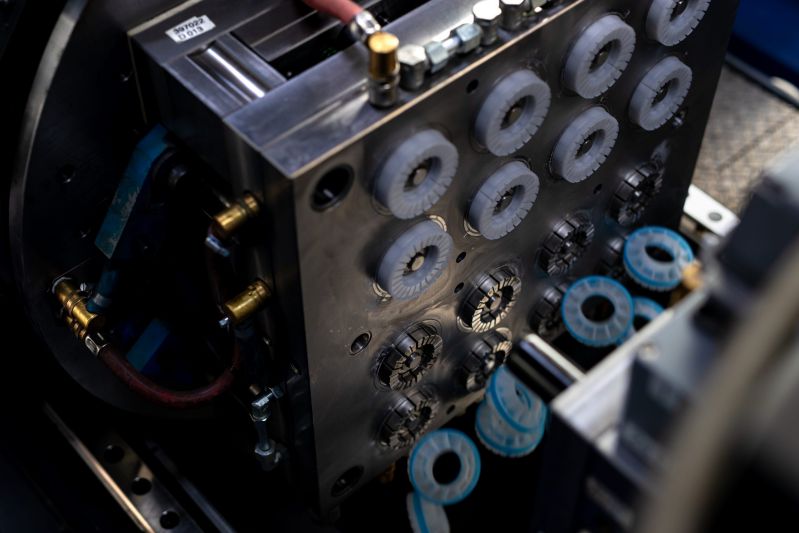Overmolding Solutions
Overmolding is the process which adding a second layer of plastic (usually is TPE) over a premolded plastic part (we referred to as the substrate) we during injection.
overmolding is efficient and economical manufacturing technology.The process also produces highly durable ergonomic plastic parts or components . From a design point of view, overmolding (two-shot molding) provides designers with a lot of flexibility, because this process can create complex geometric shapes and adapt to multiple colors to produce more beautiful parts.
As an engineering based company, we support you through every step of your any overmolding project - from concept assessment, 3D design, design for manufacturing (DFM) , mold making, samples testing to final parts approval and mass production.
overmolding is efficient and economical manufacturing technology.The process also produces highly durable ergonomic plastic parts or components . From a design point of view, overmolding (two-shot molding) provides designers with a lot of flexibility, because this process can create complex geometric shapes and adapt to multiple colors to produce more beautiful parts.
As an engineering based company, we support you through every step of your any overmolding project - from concept assessment, 3D design, design for manufacturing (DFM) , mold making, samples testing to final parts approval and mass production.
- 3D modeling, design, modification
- Material compatibility and physical properties selection assistance
- Detailed DFM analysis, mold solution
- Mold making and prototype support
- Mold testing and molding technlogy support
- Project management resources to manage requirements to customer timelines
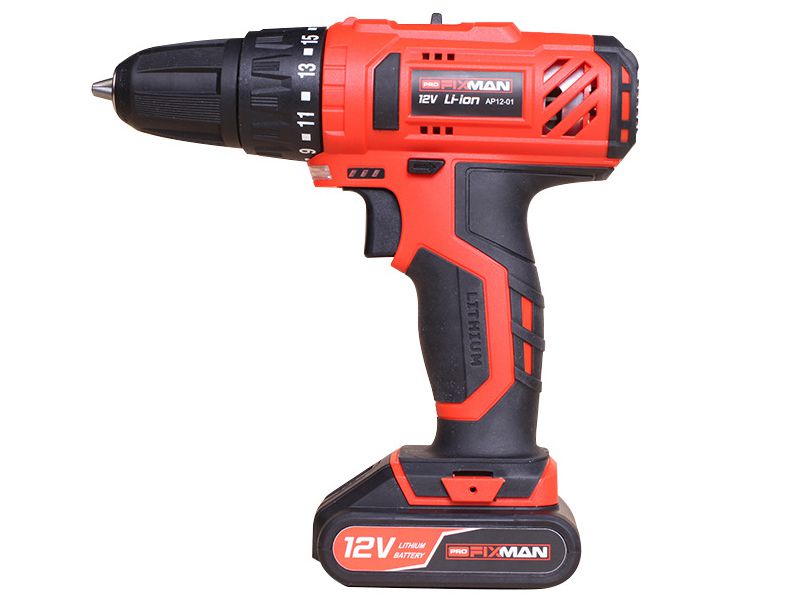
How does Overmolding work?
Overmolding is a process which using two separate mold and two material bond together form a full plastic parts during injection molding. The material can be the same or different.
The first material forms the substrate, then the second material is injected on top of it. the second material is commonly thermoplastic elastomer (TPE). When these two are combined, their adjoining can be the cause of a mechanical interlock (undercuts, holes, ribs) or a chemical bond between the two. This allows for a wide variety of design freedom, as you can create products with multiple colors, textures, and layers. Following is overmolding process step:
Generally overmolding process need 3-4 step:
1. Injection molding creating the substrate
2. The metal inserts or magnets is then inserted into the first plastic part, form substrate component ( (insert + plastic substrate), if no metal or magnets these inserts need to whole entire encapsulated, this step isn't required.
3. Manual or servo robot loading the substrate or substrate component (insert + plastic substrate) is placed into the second mold cavity
4. Injection molding the plastic on the suface of substrate or substrate component with the second mold, covering the magnet or metal insert and fusing with the first half of the plastic.
For have magnets or other these types of inserts entire package, must be manual assembly insert. we provide the ability to create fully encapsulated magnets. we have more than 10 years of experience in magnets injectoin molding project. like these parts, There are many factors to consider, first, magnet have two poles, magnetism must be considering, because of our mold is steel. second, is all the same poles at a place or different also need considering. third, magnetizing at injection molding before or after must be considering too.
The first material forms the substrate, then the second material is injected on top of it. the second material is commonly thermoplastic elastomer (TPE). When these two are combined, their adjoining can be the cause of a mechanical interlock (undercuts, holes, ribs) or a chemical bond between the two. This allows for a wide variety of design freedom, as you can create products with multiple colors, textures, and layers. Following is overmolding process step:
Generally overmolding process need 3-4 step:
1. Injection molding creating the substrate
2. The metal inserts or magnets is then inserted into the first plastic part, form substrate component ( (insert + plastic substrate), if no metal or magnets these inserts need to whole entire encapsulated, this step isn't required.
3. Manual or servo robot loading the substrate or substrate component (insert + plastic substrate) is placed into the second mold cavity
4. Injection molding the plastic on the suface of substrate or substrate component with the second mold, covering the magnet or metal insert and fusing with the first half of the plastic.
For have magnets or other these types of inserts entire package, must be manual assembly insert. we provide the ability to create fully encapsulated magnets. we have more than 10 years of experience in magnets injectoin molding project. like these parts, There are many factors to consider, first, magnet have two poles, magnetism must be considering, because of our mold is steel. second, is all the same poles at a place or different also need considering. third, magnetizing at injection molding before or after must be considering too.

The Benefits of Overmolding
Overmolding plastic parts can help in wide range of functional and structural uses. A wide range of materials are capable of being overmolded, including both hard and soft plastic resins.it is a ideal molding process for quickly creating durable, reliable, vibration-resistant and complex geometries plastic components.
- Create strong material bonds
- Improved functionality and look
- Eliminates need for assembly
- Improve the tactile feel of the substrate
- Improve the aesthetic appearance of the part
- Improve shock resistance
- Produce a multi-colored part
- Reduced handling and secondary assembly
- Improved strain relief and flexibility
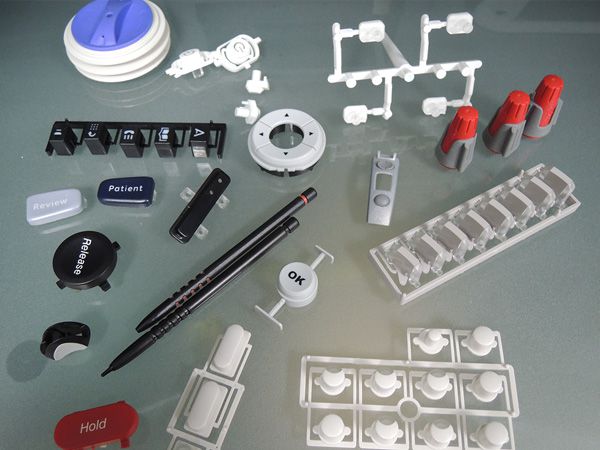
Engineering Drives Innovation
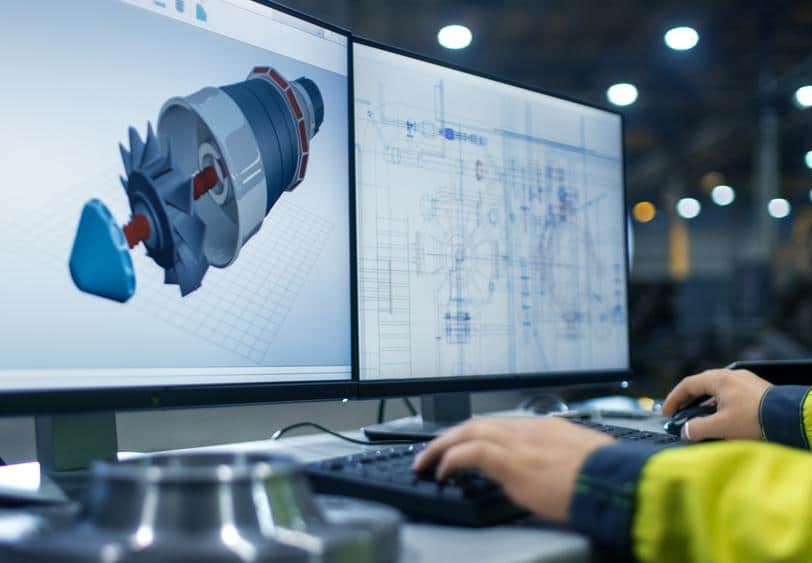
Engineering is our core competitivness. We continually excel with challenging and complex requests. Our expertise in complex geometries, technically challenging injection molding, insert molding and overmolding has set us apart from other companies.
Our engineering team can take your concept and turn it into a manufacturable design, including complete models and manufacturing drawing. We can perform a wide range of analyses such as tolerance stacks, static and dynamic loading, and other Design for Excellence (DFX) practices.
With our many years of custom plastic overmolding experience, in-house engineering, mold design and making, and focus on innovative solutions. With our expertise, we are able provide design feedback for your challenging overmold applications. Our engineers will work with your team to offer solutions that optimize your design concept.
We advocate that you take the opportunity to tap into our technical support early in the design process because it helps de-risk the project thus avoiding costlier modifications at a later stage.
Our engineering team can take your concept and turn it into a manufacturable design, including complete models and manufacturing drawing. We can perform a wide range of analyses such as tolerance stacks, static and dynamic loading, and other Design for Excellence (DFX) practices.
With our many years of custom plastic overmolding experience, in-house engineering, mold design and making, and focus on innovative solutions. With our expertise, we are able provide design feedback for your challenging overmold applications. Our engineers will work with your team to offer solutions that optimize your design concept.
We advocate that you take the opportunity to tap into our technical support early in the design process because it helps de-risk the project thus avoiding costlier modifications at a later stage.
Overmolding Manufacturing Considerations
If you considering using the overmolding process for your part, it is important to plan your process before you start. Below are the major considerations from a design perspective:
- Material Selection
When selecting material, both the substrate and the overmold material should be considered. it is also very important to ensure that the plastic material for overmolding is chemically compatible with the substrate. As a prerequisite, the substrate material getting overmolded needs to be robust enough to survive the injection molding process where it will be exposed to high heat and extreme pressures as molten plastic flows past it. - The Design
The Part design and mold design must be consider overmolding process, including the second molding material Stability of binding. When the overmold material does not chemically bond well with the substrate, the two materials can be mechanically bonded by incorporating holes, ribs or undercut on the surface of the substrate. - The Substrate Fixed
Considering the molding pressure, the substrate must be stably fixed in the mold cavity, and not affect second molding. for high quantity overmolding part, two-color mold is the best choice. - The Mold
Since the materials we use shrink and warpage as they cool following the overmolding process, special considerations are made during the mold development process to accommodate for changes in dimensional tolerance and warpage. - The Cost
For big volume, must be using automation production. cutting-edge overmolding solutions use a unique combination of process optimization and robotic automation to produce parts with an extremely high level of consistency. Therefore, relatively high-end mold investment is necessary.
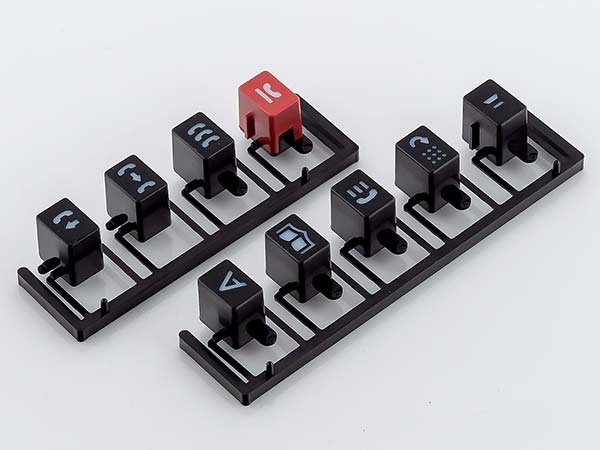
Vertical Injection Molding
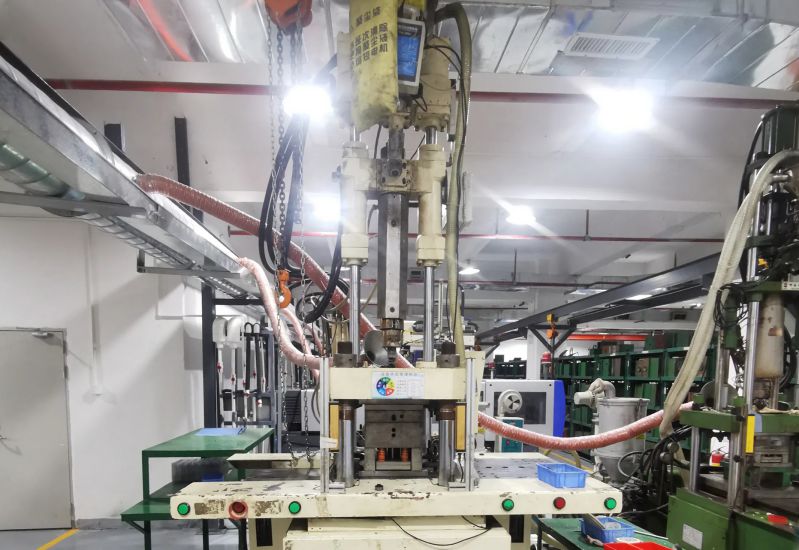
Proper mold design and construction are critically important in overmoding and insert molding to maintain part tolerances and tooling reliability. We often employs automation in the overmolding and insert molding process for fast and precise placement of substrat or inserts.
Most injection molding is done on horizontal presses, but vertical injection machine are beneficial for insert molding and overmolding. With vertical molding, molds open and close on the y-axis, allowing gravity to do the work of holding substrat or inserts in the mold and eliminating the need for a specially made mold.
Vertical injection molding equipment is designed with open clamps and rotary tables. This allows for work with multiple molds and simultaneous operations — pre-molding, injection molding and post-molding. As a result, there is less of a need for manual operation and intervention, as well as higher efficiency, increased productivity and reduced costs.
Most injection molding is done on horizontal presses, but vertical injection machine are beneficial for insert molding and overmolding. With vertical molding, molds open and close on the y-axis, allowing gravity to do the work of holding substrat or inserts in the mold and eliminating the need for a specially made mold.
Vertical injection molding equipment is designed with open clamps and rotary tables. This allows for work with multiple molds and simultaneous operations — pre-molding, injection molding and post-molding. As a result, there is less of a need for manual operation and intervention, as well as higher efficiency, increased productivity and reduced costs.
Overmolding Substrate Loading Solutions
Generally, the overmolding process is the same as an injection molding process, except that the second molding molten plastic is molded over another component. The difference lies in operation. With overmolding, the substrate is loaded into the mold cavities on each cycle. In addition, how the substrate is loaded creates two different overmolding operations:
Manual loading
In common, manual loading overmoding need two separate mold, one mold making the substrate, the second mold is called over mold. After the substrate finish, The substrates are then hand loaded into another mold for the overmolding operation. The operator will also remove the finished part from the mold, inspection, and package the parts. Manual overmolding is the most common procedure for low to mid-volume overmolding.
Benefits of manual overmolding
1. Operate Simple
2. Lower mold cost
Defect of manual overmolding
1. Add labor cost
2. Reduce product quality
So manual loading substrate only suit for low quantity order
Benefits of manual overmolding
1. Operate Simple
2. Lower mold cost
Defect of manual overmolding
1. Add labor cost
2. Reduce product quality
So manual loading substrate only suit for low quantity order
Two-color Mold
Two color molds have high requirements for quality, mold design and with high efficiency, low cost. It suitable for large volume, high requirement plastic products. two-color mold have the same mold cavity, two different mold core. Two color injection is to inject two plastic materials on the same injection molding machine with two time injection molding, but the product is ejected in one time. It is usually completed by a set of molds and requires a special two-color injection molding machine.
In two-color mold injection, the mold is clamped, the first material is injected into the mold to form first plastic parts(substrate), and after the injection is completed, the mold is opened, the first product (substrate) is left in the core side, then the mold is rotated by 180 degrees, the mold is closed again and the second plastic resin is injected into the mold cavity through the second barrel to form a two-color product, cooling, cure, eject, finish a injection cycle.
If there is a high requirement for plastic parts production capacity, please choose two-color injection mold. Attractive Plastic has rich experience in two-color injection mold as well as over-mold. If you have two shot injection mold plastic parts demands, please contact us, our senior engineer, designers will analysis your products and give professional suggestion to you.
In two-color mold injection, the mold is clamped, the first material is injected into the mold to form first plastic parts(substrate), and after the injection is completed, the mold is opened, the first product (substrate) is left in the core side, then the mold is rotated by 180 degrees, the mold is closed again and the second plastic resin is injected into the mold cavity through the second barrel to form a two-color product, cooling, cure, eject, finish a injection cycle.
Benefits of two-color mold overmolding
1. High efficiency
2. High quality
3. lower price than tradition overmolding
1. High efficiency
2. High quality
3. lower price than tradition overmolding
Defect of two-color mold overmolding
1. Mold cost high
2. High mold maching requirement
3. High precision two-color Injection machine
1. Mold cost high
2. High mold maching requirement
3. High precision two-color Injection machine
If there is a high requirement for plastic parts production capacity, please choose two-color injection mold. Attractive Plastic has rich experience in two-color injection mold as well as over-mold. If you have two shot injection mold plastic parts demands, please contact us, our senior engineer, designers will analysis your products and give professional suggestion to you.
Applications for Overmolding
A variety of thermoplastic materials can be overmolding, from soft plastics (such as thermoplastic elastomers) to hard plastics (like nylon ABS polycarbonate etc.). so overmolding materials used can either be the same materials or different. This process have a wide indudtry application. we primarily focuses on overmolding for the following sectors: Automotive, Medical, Industry, Consumer, Beauty, Electronics Electrical etc.
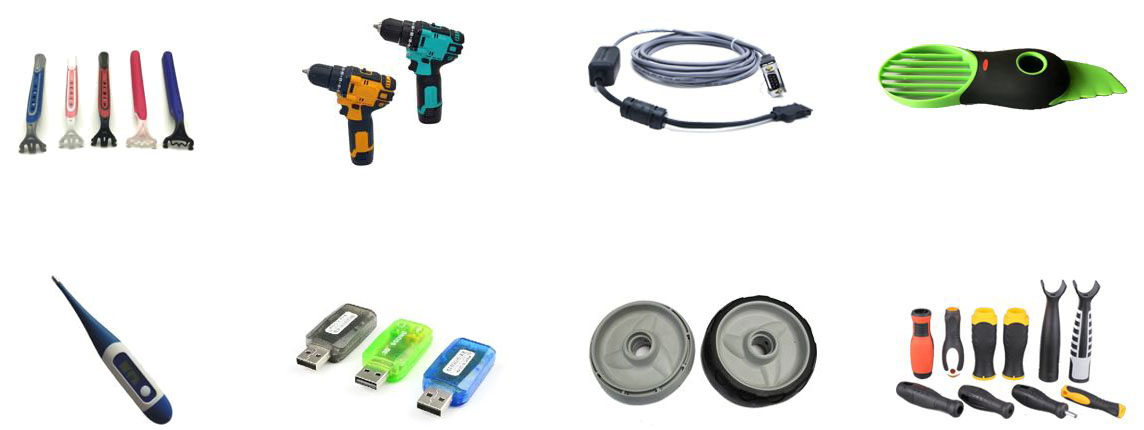
Overmolding Design Considerations
In overmolding design, Proper shut off design is critical to stop the second plastic material flow in precise geometry location and prevent undesirable random edge flash.
- Maintain uniform thickness of the overmolding
The overmolding should maintain a constant thickness between 1 mm to 3mm. If really need sections of different thicknesses, avoid abrupt changes in thickness and smooth out surfaces as much as possible or add excess areas between different thicknesses - To avoid warping, keep the overmolding layer wall thickness thinner than the substrate.
- The substrate must be very strong to prevent shifted or deformed due to excessive pressure during injection molding. To accomplish this the mold needs to be designed with geometry that captures the insert substrate. simple mean is the contour of the second mold must fully support the substrates.
- Mold maching must be keep tight tolerance.
Seams must be very tight between the overmold and substrate, otherwise, flash will occuring - Avoid thin edges
Avoid edges that taper to a fine point. During injection, slowing of the flow and subsequent cooling can have adverse effects on the adhesion between the substrate and overmolding. - The substrate hold method
Account for shrinkage of the substrate. it must to be located successfully and held sufficiently to ensure proper fixation in the overmolding cavity. This is critical because failure can result in scrap parts or even mold damage that is often lengthy and expensive to repair - Material compatibility
Material compatibility is a complex but vital part of the design for overmolding. Chemical bonding refers to the attraction between the materials at a molecular level and the primary means by which overmolding is bonded to the substrate. - Mechanical bonding
Mechanical bonding is the use of the geometry of the product to help prevent separation of the overmolding. common mechanical bonding including undercut, hole, ribs etc. - Venting System
Overmolding mold is dfferent tradation mold, must be espeical pay attention to it.
Full Turnkey Overmolding Solutions
With many years of combined experience under their belts, our manufacturing engineers know optimal part design can improve production capabilities while reducing costs. Our engineering group provides design assistance and develop products
we strive to provide the most comprehensive analysis of a product before we begin to fabricate the injection mold. This includes gate location selection, thickness analysis, warpage prediction, and weld line identification among other items of moldability.
We have the expertise to take on the complex, tight-tolerance overmolding projects that others can’t. Partnering with Attractive Plastic for overmolding brings with it a range of advantages, and we can supply a number of additional benefits to our customers. When you choose us, you’ll receive:
we strive to provide the most comprehensive analysis of a product before we begin to fabricate the injection mold. This includes gate location selection, thickness analysis, warpage prediction, and weld line identification among other items of moldability.
We have the expertise to take on the complex, tight-tolerance overmolding projects that others can’t. Partnering with Attractive Plastic for overmolding brings with it a range of advantages, and we can supply a number of additional benefits to our customers. When you choose us, you’ll receive:
- The experience of an industry leader who has produced millions of parts for businesses all over the world
- A dedicated team committed to supplying the engineering and manufacturing solutions our customers need to thrive
- A focus on quality to ensure the inspection and testing of parts is conducted with the greatest of care
